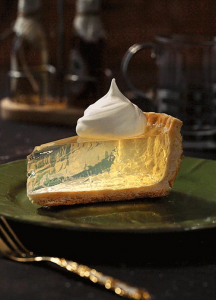Fancy Edible Chemicals
Clear pasta, exploding fruit caviar, flavoured air; things that only one could find in Willy Wonka’s chocolate factory are no longer just teasers that only exist in our imaginations. These otherworldly creations come from molecular gastronomy, the creation of Hungarian physicist, Nicholas Kurti and French chemist, Hervé This. Molecular gastronomy is a blend of manipulating the physical and chemical processes of cooking to create playful interpretations of traditional recipes. For example, the classic lemon meringue pie, a favourite for those that enjoy the sweet and sour combination can now be enjoyed transparently.

Molecular gastronomy takes traditional recipes and breaks down each step of the preparation and through specific analysis, recipe development of producing new techniques in food preparation and even new textures. As described in Roisin Burke et al.’s journal “Molecular Gastronomy: An Introduction” one of the main techniques for specific analysis used is the Dispersed Food Formalism (DSF) which allows for chefs to look at how the chemical composition of certain ingredients in food will react with each other in different phases: gas, liquid, solid, oil. For example, the exploding fruit caviar that have become extremely popular in frozen yogurt/ bubble tea shops use the molecular gastronomy technique of spherification. Spherification looks at the interactions between the surface of two chemicals (sodium alginate and calcium carbonate) that bind together to form a flexible casing surrounding a flavourful liquid.

This highly scientific, technical and innovative branch of culinary has managed to allow the general public to enter a world where advanced chemistry and physics play a major role. This new age of culinary has become extremely popular that restaurants such as Alinea, have become centralized to only producing molecular gastronomy creations. As we continue to understand the complex sciences integrated in our lives, the divide between the science world where words like chemicals and food usually would not exist in a sentence will cease to exist and we can broaden our minds to a more innovative future.
Monica Lee

One response to “Fancy Edible Chemicals”